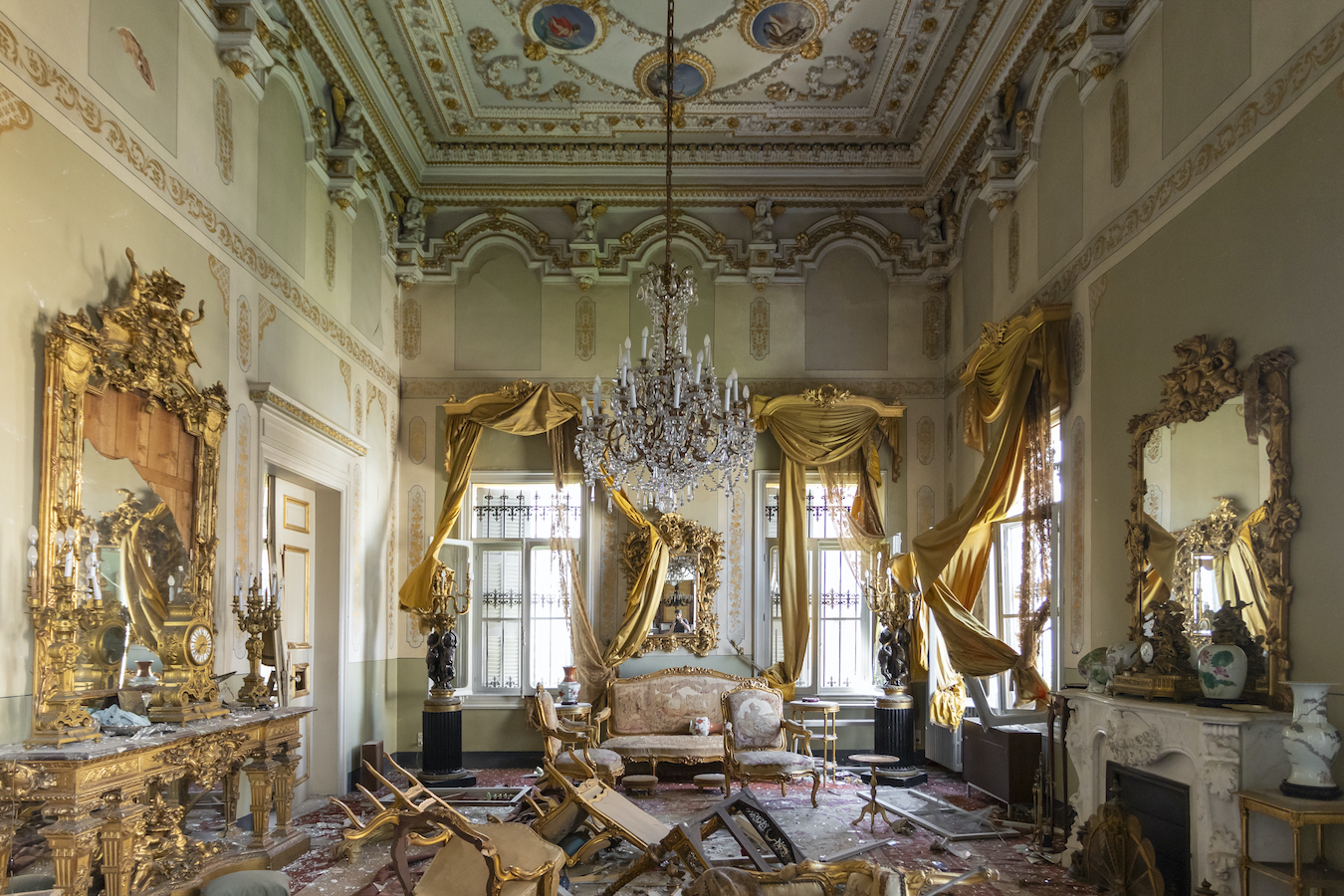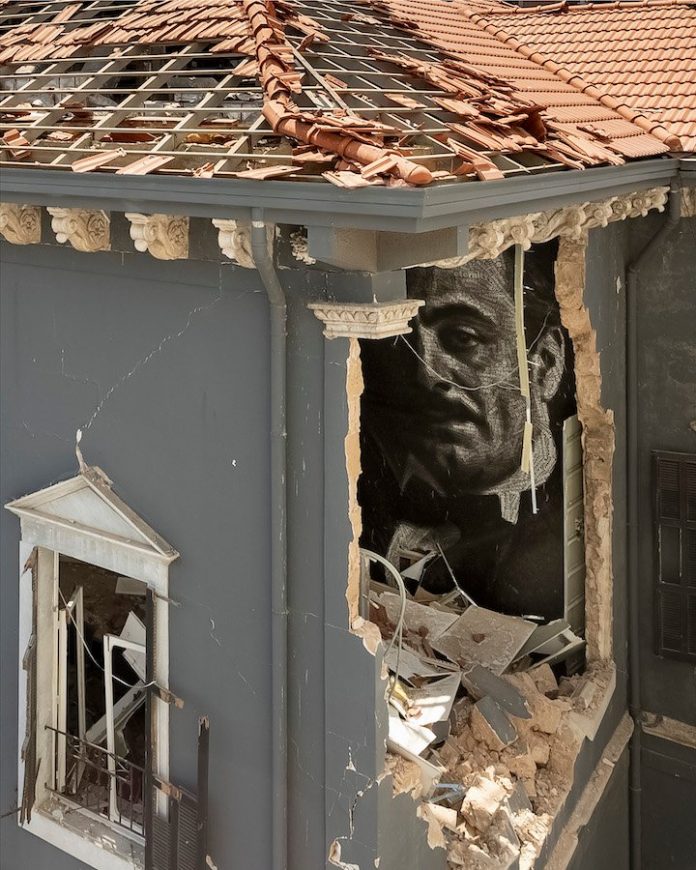DUBAI: It’s become one of the most powerful photographs of the results of the August 4 explosion in Beirut: An interior mural of the face of Lebanon’s revered poet Kahlil Gibran, partially destroyed and trapped between broken roof tiles and scattered debris, peeking out through an entirely collapsed wall. It sums up the devastation wrought on Lebanon’s heritage by the blast.
“When I first saw it I got goose bumps,” says Lebanese photographer Dia Mrad, the man behind this image — which has since gone viral — to Arab News. “I think, with that photo, I was able to capture everything that we were all feeling at that point; complete devastation. The look in Gibran’s eyes was very expressive to a lot of people — the way that anger mixed with sadness and disappointment showed on his face.”

As Lebanon continues to suffer the simultaneous crises of an all-but nonexistent government, an unprecedented economic collapse, and the COVID-19 pandemic, Mrad has made it his mission to document the damaged facades of buildings, including palaces and estates, and their shattered interiors. Some of them date back to the late 1800s, when Lebanon was under Ottoman rule.
“In a lot of places, it doesn’t feel like it happened six months ago, it feels like it was yesterday. The destruction is still as evident as it was on day one,” Mrad says of the damage, although the same can also be said of people’s morale. “You can see it in people’s eyes,” he says. “It’s all changed. You used to go down on the streets and see happy faces and people just going about their day.”

Shortly after the blast at the port, Lebanon’s Ministry of Culture stated that approximately 640 historical buildings — mostly in the popular neighborhoods of Gemmayze and Mar Mikhael — had been damaged in the explosion, with close to 60 of them at risk of collapsing. “They are the most-damaged areas as they were closest to the port. They just happen to be the areas that are richest in cultural and architectural heritage,” says Mrad, adding that such precious buildings lack protection laws.
“They are classified in a list, but there’s supposed to be incentives to maintain them,” he explains. “The government should be more strict with owners about what they can and can’t do. A lot of these buildings are abandoned because owners don’t want to renovate them. If they’re not interested in heritage, they’d rather just destroy that small building and sell the land for millions of dollars.”

This notion of intentional destruction was Mrad’s initial motivator to do something, he explains. “There was always that fear of wanting to somehow preserve the memory of these buildings for the future in case they were gone,” he says. “I think this was one of the biggest reasons that drove me to take that many photos.”
A master’s graduate in architecture, Mrad has always admired the diversity of his cosmopolitan city’s architectural scene. “It’s so related to history,” he notes. “There were different movements in architectural style, where the traditional Lebanese style was affected by the Art Deco movement and modernism. What is fascinating is that it still shows in the urban landscape.” Through his recent work, Mrad is creating a before-and-after series, assessing the extent of the damage caused by the blast. He is planning to compile a selection of his photography in a book.

An image just as striking as his shot of the Gibran mural is Mrad’s picture of the interior of the Feghali House in Achrafieh, with its golden drapes, pastel-green walls and ornate ceiling. After the explosion, it looked ransacked, with fallen chairs and shards of broken glass littering the ground. “To see it all collapsed like that is like seeing the Mona Lisa exploded,” says Mrad.
One of his more dramatic depictions of exterior damage is the Dagher Estate, founded by the Dagher family in the mid-1700s. Its garden was gutted by the blast, including the loss of a Jacaranda tree that had been planted more than 100 years ago.

Mrad isn’t focusing his energy purely on his personal projects, however. Using his background in photography, he is currently involved with the Beirut Heritage Initiative, a local organization that is spearheading efforts to repair what has been destroyed. Although the teams have faced setbacks — from COVID-19 restrictions, to negligence from the state and a lack of access to donation funds from abroad — they have been able to renovate a few structures, temporarily shelter buildings with protective material and install scaffolding to prevent collapse.
Will it prove to be enough? Mrad doesn’t sugarcoat his answer.
“There has definitely been a lot of improvement,” he says. “But in terms of actually rebuilding or getting back to how it was, we’re still a very long way off from that.”


